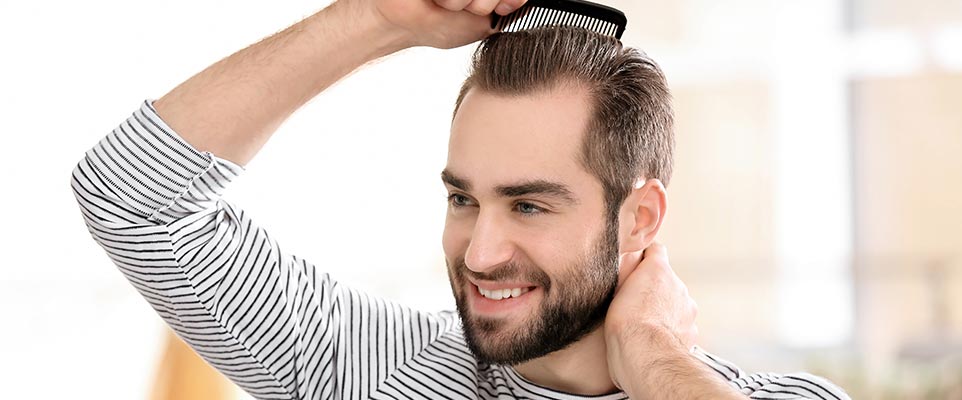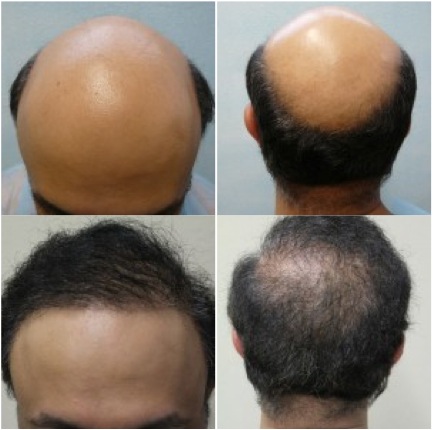Hair Transplant

Hair transplantation is a surgical technique involving moving individual hair follicles from a part of the human anatomy (the donor site) to bald or balding pieces (the receiver site). It’s primarily used to deal with male pattern baldness, whereby grafts comprising hair follicles that can be genetically resistant to balding are transplanted to the bald scalp. However, it can also be used to revive eyelashes, eyebrows, beard hair, chest hair, and pubic hair and fill in scars caused by accidents or surgery, such as facelifts and prior hair transplants. Hair transplantation is significantly different from skin grafting for the reason that grafts contain the majority of the epidermis and dermis surrounding the hair follicle, and many tiny grafts are transplanted rather than a single strip of skin.
The current hair transplantation can perform an all-natural appearance by mimicking nature hair for hair. This hair transplant procedure is known as Follicular Model Transplantation (FUT). Donor hair may be harvested in two completely different ways.
- Strip Harvesting – a strip of scalp is eliminated under local anesthesia. The wound is then sutured straight back together. That piece of scalp tissue is then cut into little bits of tissue called grafts, which are then transplanted back into the thinning part of the patient’s head. This method can keep a linear scar in the donor area, which should be covered by a patient’s hair (if long). The recovery time is around two weeks and will demand the stitches to be eliminated by medical personnel.
- Follicular Unit Extraction or FUE Harvesting – individual follicles of hair are eliminated under local anesthesia; that micro removal uses tiny punches of between 0.6mm and 1.25mm in diameter. Each follicle is then reinserted back into the scalp in the thinning area utilizing a microblade. Because these are single follicles and no wide range of tissue is eliminated, there are no apparent marks or post-surgery pain without stitches to be removed. Recovery from FUE is within seven days.
With the most recent changes in surgical procedures, the recovery time is immediate. There’s no bed rest or hospitalization required after the hair transplant, and the in-patient can immediately return home after the OPD procedure. He can actually return to work from Day 2 after surgery (provided the hair transplant is performed by way of a competent and skilled/experienced surgeon). Also, the procedure is created nearly easily by these experienced surgeons, although it was associated with lots of pain earlier in the day.
The procedure and Surgery
The surgeon analyzes the patient’s scalp at an initial consultation, discusses his choices and objectives, and advises them on the most effective strategy (e.g., single vs. numerous sessions) and what effects may reasonably be expected.
Transplant operations are conducted on an outpatient foundation, with mild sedation (optional) and injected topical anesthesia, and usually last about six to eight hours. The scalp is shampooed and then handled with an antibacterial chemical prior to the donor scalp being harvested.
In the most common follicular product procedure, the surgeon harvests a strip of skin from the posterior scalp in a location of excellent hair growth. The excised strip is about 1 to 1.5cm x 15 to 30 cm in size. While closing the ensuing wound, assistants begin to dissect individual follicular unit grafts from the strip. Dealing with binocular Stereo-microscopes, they cautiously eliminate excess fibrous and fatty tissue while seeking in order to avoid injury to the follicular cells that’ll be used for grafting.
The latest method is ‘Trichophytic closure,’ which significantly affects more acceptable scars at the donor area.

FUE harvesting negates the requirement for significant aspects of scalp tissue to be harvested and may give very typical effects with the adequately experienced surgeon.
The surgeon then uses tiny micro blades or fine needles to puncture the sites for obtaining the grafts, putting them in a predetermined density and pattern and regularly angling the injuries to advertise a sensible hair pattern. The assistants usually do the last part of the procedure, placing the person’s grafts in place.
